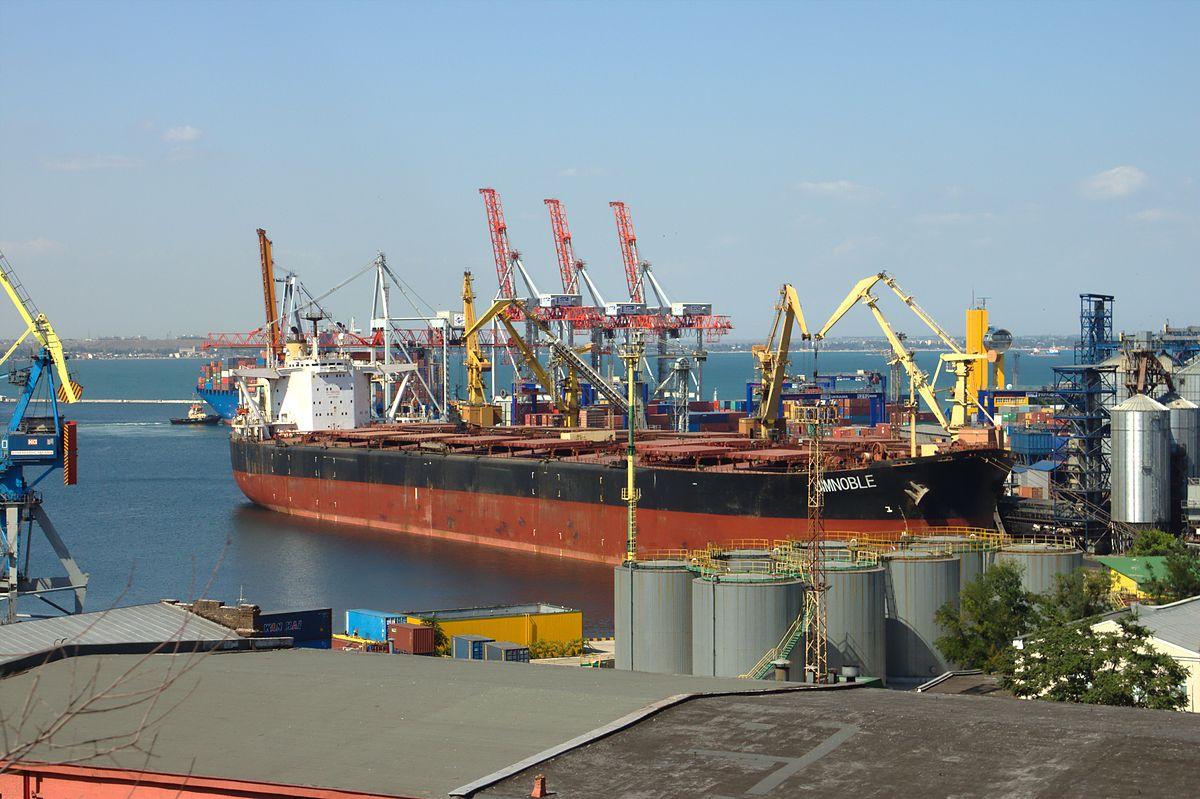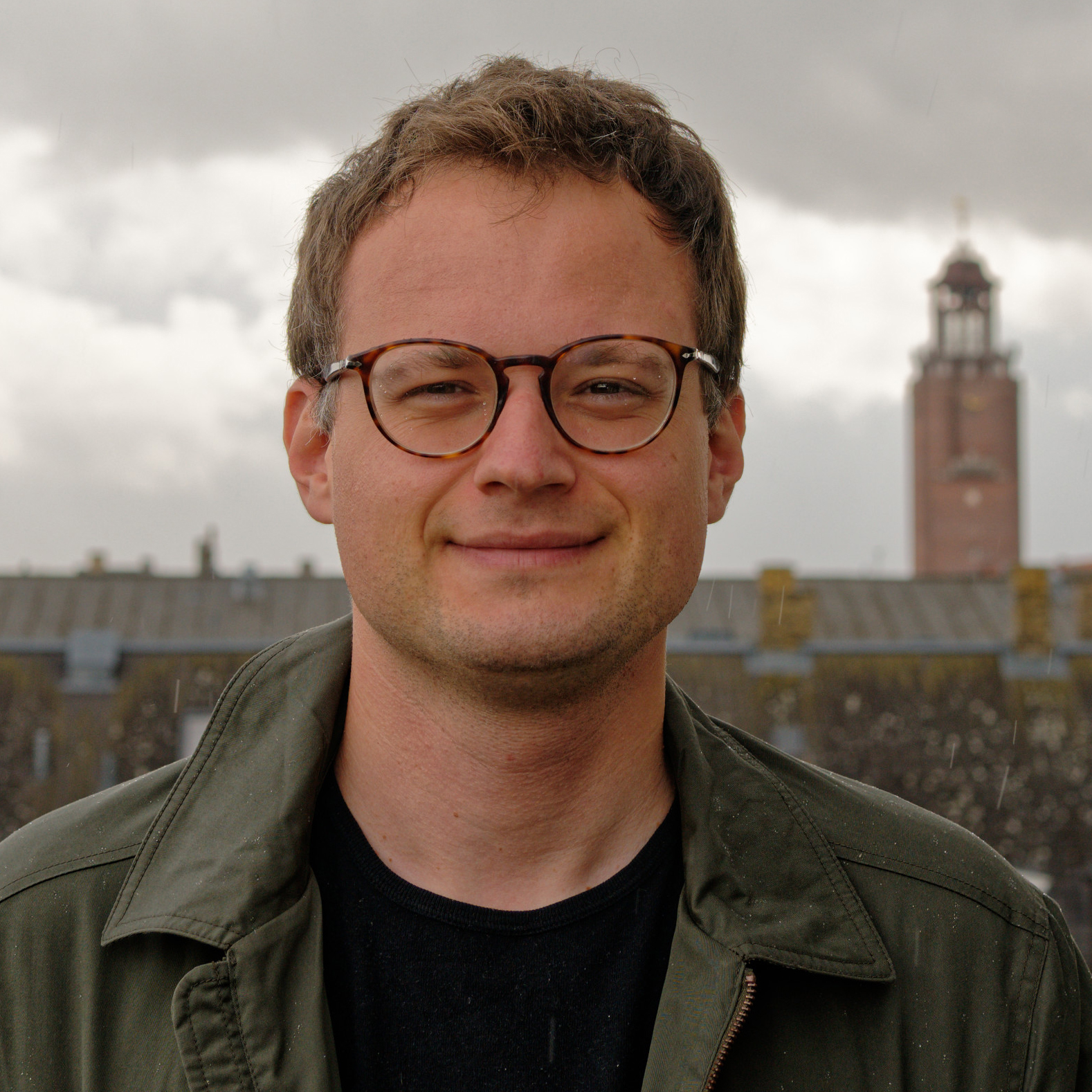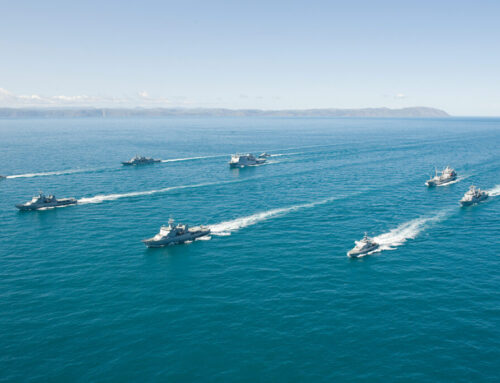PULASKI POLICY PAPER The Baltic Route key to Ukraine’s future and global food stability (Miłosz J. Cordes)
Autor foto: Domena publiczna

The Baltic Route: key to Ukraine’s future and global food stability
20 grudnia, 2022


PULASKI POLICY PAPER The Baltic Route key to Ukraine’s future and global food stability (Miłosz J. Cordes)
Autor foto: Domena publiczna
The Baltic Route: key to Ukraine’s future and global food stability
Autor: Miłosz J. Cordes
Opublikowano: 20 grudnia, 2022
Pulaski Policy Paper no 29, December 20 2022
9 months into the invasion, the Grain from Ukraine summit took place in Kyiv. Western leaders gathered there, while commemorating the victims of Holodomor, have finally acknowledged the need for secure and reliable transport schemes to and from Ukraine. It is time for decision-makers in Kyiv, Warsaw and Brussels to turn their eyes to strategic opportunities offered by the Baltic Sea and combine their financial and political efforts to allow for selling Ukrainian grain overseas as it can prevent major ruptures in Africa and the Middle East.
Closure of the Black Sea gateway
Russia’s invasion of Ukraine has turned from blitzkrieg to a war of attrition. Unable to seize Kyiv, the Kremlin has shifted towards terrorising civilian population, destroying infrastructure and shattering Ukrainian economy. So far, Moscow’s strategy has turned out quite effective. Even though Ukraine has managed to defend Odesa and Mykolaiv, it could not export grain and has been effectively unable to make use of its littoral facilities.
That is a substantial economic loss for Ukraine. The port of Odesa alone has the capacity of handling 40 million tons of cargo annually and before the war was the country’s gateway to most global destinations. War-torn Ukraine cannot export goods vital to global stability, such as grain, and receive military equipment and humanitarian aid.
Regardless of when the military phase of the conflict ends and despite the agreement on grain export struck by Ukraine, Russia, Turkey and the UN in July 2022, it is unlikely that Russia will lift the blockade or will not seek to disrupt Ukraine’s overseas trade in different ways, as the Kremlin’s main goal is to weaken Kyiv and impair the post-war recovery of the Ukrainian economy, no matter how or when it happens.
Even in the most positive scenario of opening up of Odesa, Ukraine will face a severe decrease of its maritime cargo capacities due to destruction of Mariupol and Berdiansk on the Azov Sea. It constitutes a serious challenge to any reconstruction projects in the future. Without safe access to sea routes, recovery and sustained economic growth of Ukraine will be severed.
What can help is the proximity of the Baltic Sea and utilisation of brand-new infrastructure present in Poland and, to a limited extent, Lithuania and eastern Germany. Even if it does not respond to all current logistical challenges, it can mitigate the effects of the damage inflicted by Russia’s aggression. It can also anchor Ukraine more in the European economic system, which will be bringing added value for years to come.
The almost forgotten historical links
Between 1500s and 1700s, a large part of today’s Ukraine belonged to the Polish-Lithuanian Commonwealth, tied economically with the Baltic Sea. Merchants from L’viv or Zhytomyr sold their goods in the north, above all the Ukrainian grain. Even from Kyiv, it was easier to reach the Baltic than the Baltic Sea shores as travelling south meant many dangers, such as nomadic tribes, Crimean Tatars and their protector, Ottoman Turkey.
Role of the Baltic Sea for Ukraine ended when Poland-Lithuania become partitioned by Russia, Prussia and Austria. In the centuries that followed, Ukraine has been very distant from the Baltic Route mostly because of Austria being a landlocked state and Russia dominating half of the Black Sea coast.
In the view of Russia’s recent invasion of Ukraine, the institutional West should draw from historical precedents and provide the necessary long-term support for Ukrainian economy by connecting the country with the Baltic Sea routes with a network of highways and railways. Thanks to them, Ukraine will be able to benefit from the infrastructural revolution that Central Europe has undergone in the last 30 years and that until recently has largely ignored other vectors than the intra-EU East-West axis.
The price of horizontal integration
After the Soviet Union had disintegrated, those of the Central and Eastern European countries who chose the Euro Atlantic path, started building new infrastructural connections with their western neighbours. In approximately 20-25 years, they managed to create the core network of highways leading to Berlin, Munich, Brussels, Vienna or Paris.
It was a rather selfish race of ambitious nation-states, seeking to attract foreign investments. Little was done to create intraregional linkages and almost nothing to go beyond to countries like Ukraine. It was only in the run-up to the 2012 European Football Championship in Poland and Ukraine when some limited road investments were made. Still, Ukraine was effectively cut off from its Central European partners’ infrastructural projects.
The mind-set of EU leaders started to change after the 2014 events but even then, main efforts were a result of chance, if not a ricochet. Poland’s 2015, largely EU-sceptical government advocated for more transport networks within the region to limit the horizontal-vertical imbalance created after 1989/1991 – hence the Trimarium Initiative. For Warsaw, the main reasons were, however, purely internal. New decision makers sought to bring more investments to the conservative, underdeveloped east and southeast of the country, traditionally their main support base.
Even with the Trimarium in play, Ukraine was on the side-lines. It never became a full-fledged member of the initiative as the latter was meant to be purely intra-EU. Brussels only acknowledged the necessity for a tighter transport integration between EU’s core territory and its outskirts and accelerated such projects as Via and Rail Baltica, connecting Estonia, Latvia and Lithuania with Poland. Ukraine, however, was never part of these plans.
Three paths towards intermodality
Harbours
The Russian invasion of February 2022 has shed a new light on the necessity of a wide regional cooperation in Central and Eastern Europe in terms of strategic maritime, road, railroad and energy infrastructure. Such cooperation needs to involve Ukraine.
Today, the Polish ports of Gdańsk, Gdynia and Szczecin-Świnoujście, as well as, to a limited extent, the Lithuanian port of Klaipeda or the German port of Rostock should gave the capacity of becoming hubs for Ukrainian imports and exports. In the last decades, they have undergone a profound modernisation from obsolete socialist-era to state-of-the-art facilities.
Their cargo turnover has increased three-fold between 1991 and 2020, but they have still capacities to process more loads. In addition, they can be complemented by subsidiary ports in their vicinity, such as Elbląg on the Vistula Lagoon. The Gdańsk Harbour services 650 vessels (18% of the total number) that could be redirected to Elbląg. As they constitute only 1,5% of the cargo, freeing these capacities can be mutually beneficial.
| 1991 | 2000 | 2010 | 2020 | |
| Gdańsk | 17.2 | 16.5 | 27.2 | 48.0 |
| Gdynia | 7.3 | 8.4 | 12.3 | 24.7 |
| Kaliningrad | 1.5 | 4.4 | 13.8 | 10.4 |
| Klaipėda | 15.3 | 19.4 | 31.3 | 47.8 |
| Rostock | 7.8 | 23.9 | 24.1 | 25.1 |
| St. Petersburg | 10.8 (1990) | 32.1 | 58.1 | 59.9 |
| Szczecin & Świnoujście | 20.6 (1988) | 15.6 | 20.8 | 31.2 |
| Tallinn | 4.0 | nd. | 36.7 | 21.3 |
| Ventspils | 24.8 | 38.1 | 24.8 | 12.9 |
Table 1. Total cargo turnover of selected Baltic Sea ports (millions of tons). Source: author’s own work based on statistical data published by relevant port authorities.
Roads
Using these facilities is possible thanks to the existing road infrastructure in Central Europe. Already now it is easier to get from L’viv to Gdańsk, Gdynia and Szczecin than to Odesa. There are a few routes that can be used: their core are two motorways: the A4, leading from the Ukrainian border west to Cracow, Upper Silesia, Wrocław and Germany, and the A1, going north from Upper Silesia to Gdańsk. They provide a framework for swift transportation of goods by lorries.
Their capacity can be further improved by a complimentary network of express ways leading north. There are four corridors available here. First is the A4/S3 road to Szczecin (fully constructed). Second is the A4/S19/S17/S7 road to Gdańsk (almost fully constructed). Third is S17/S7 road which still lacks the section from Lublin to the border crossing in Dorohusk (100 km) and Hrebenne (150 km). Fourth is the Via Baltica that will connect Poland with the A1 and A5 highways in Lithuania, leading to Kaunas and Klaipeda.
Like it was mentioned above, some parts of the proposed corridors are still not ready, either being under construction or still being only planned. The financing needed to do so could come from the EU post-COVID recovery funds, but as long as the Polish government does not fulfil requirements to receive this money, it is largely impossible. Still, even without the missing sections the Ukraine – Baltic Sea road framework is ready for use.
Railroads
The railway network presents a substantially bigger challenge. Until recently, it was given less attention than highways in most Central European counties. In Ukraine, it has suffered even more from lack of investments and necessary maintenance. As it is still part of the Russian 1520mm gauge, contrary to the 1435mm standard in most European countries, it requires special border installations.
Nevertheless, the Chinese New Silk Road initiative has shown that pushing the railroad agenda can pay off despite technical limitations and infrastructural bottlenecks. It is a necessary addition to the maritime and road freight transport to ensure stability and intermodality of shipments.
Today, facilities used for this purpose are largely idle due to the war in Ukraine and sanctions imposed on Belarus after the August 2020 presidential election. It is possible to use them as part of the Baltic Route. The Łódź Olechów rail terminal, situated at the very centre of Poland, could act as the main hub for goods going northwards to the harbours and westwards to end receivers.
Energy security
Central European ports also give the opportunity to build up Ukraine’s energy security. As the last months have shown that Russia openly uses gas and oil as their main instrument of pressure, Ukrainian economy needs to be able to use gas from non-Russian sources. Supplying it these days is highly difficult and volatile in the whole region.
The situation is likely to improve since the completion of the Baltic Pipe has allowed for 10 billion cubic metres of gas to flow from Norway to Denmark and Poland. Other investments are crucial to ensure smooth energy transition and fuel for the region’s economic output. Ukraine should be taken into account in these endeavours and calculations, also within the Trimarium Initiative, especially now when Russia, unable to meet its objectives, targets critical Ukrainian infrastructure.
True, such a scenario looks easy only on paper. In reality, it will be difficult given the limited bandwidth of the Baltic Pipe. There are, however, other options available, such as the LNG terminals in Świnoujście, Poland, and Klaipeda, Lithuania. In addition, there is a possibility to bring gas from the southern direction, too, via Romania and Moldova, albeit it also requires certain investments.
The human factor
The long-term benefits of establishing the Baltic Route are obvious. Ukraine will gain access to the most interconnected sea basin in the world, being able to export and import necessary goods via a secure and reliable land-sea corridor. Legally speaking, there are no limitations thanks to the EU-Ukraine Association Agreement. The Baltic Route will also serve for humanitarian purposes should the military conflict continue.
Creation of a reliable transport corridor could help unleash the potential of millions of Ukrainians that fled the country because of war or had been living in Central Europe already before it. Some of the former will never come back. The brain drain will slow down the reconstruction of the country shattered by destruction in years to come.
The Baltic Route gives a chance to utilise their knowledge and experience by organising all stages of the logistical chain. It potentially means thousands of new workplaces both in Poland and Ukraine, limiting the negative effects of brain drain.
Conclusion
- Like every alternative caused by urgent needs, the Baltic Route is far from being perfect. Using it will increase transportation costs significantly due to greater distances, technical challenges and higher labour costs. It would also require creation of a whole logistical chain almost from scratch, which is always a difficult, time- and resource-consuming endeavour. There is, however, a long-term side of things that prevails – Ukraine can gain a reliable gateway for trade and assistance. It matters not only now when the war is still in its active phase. It will become even more important once it is over and the country would have to be rebuilt. Even then, the threat of closing the Black Sea routes will remain substantial. Only by using the Baltic Sea ports would Ukraine be able to ensure a steady flow of good coming to and leaving the country.
- A broader aspect of abovementioned idea is also noteworthy. If the international community wants to mitigate the effects of rising food prices caused by Russia’s deliberate actions and objective reasons, such as climate change, every possibility of exporting Ukrainian grain matters. In this sense, the Baltic Route will act as a stabilising factor for global economy. It can contribute to mitigating economic crisis in areas where social unrest is already high. If the European Union wants to avoid another migratory crisis, it can do so by using the potential lying on the Baltic Sea coast.
- The Baltic Sea Route can contribute to reviving regional cooperation in wider Central Europe. It has been severed by the COVID-19 pandemic, growing concerns over the rule of law in Hungary and Poland, as well as by contradicting interests of the countries of the region. So far, the Trimarium has been rather a toothless political tool due to inherent mistakes made at its conception. With the war in Ukraine ongoing, these mistakes can be fixed by inviting Ukraine into the club and manifest the scale of transition that Central Europe has undergone in the recent 30 years.
Author: Miłosz J. Cordes holds PhD in Cultural Studies, MA in East-European Cultural Studies, MA & BA in International Relations and BA in History. He is a post-doc researcher at Lund University and lecturer at DIS Study Abroad. Miłosz spent 10 years at Polish diplomatic service, having been posted to Kaliningrad, Brussels and Malta. His research interests cover identity, politics of memory, nationalism & populism in Central and Eastern Europe, the Baltic Sea Region integration, as well as the West-Russia relations..
The views expressed in this article are author’s own and do not reflect the position of any institution he is affiliated with.
The Paper was prepared in cooperation with International Centre for Ukrainian Victory






